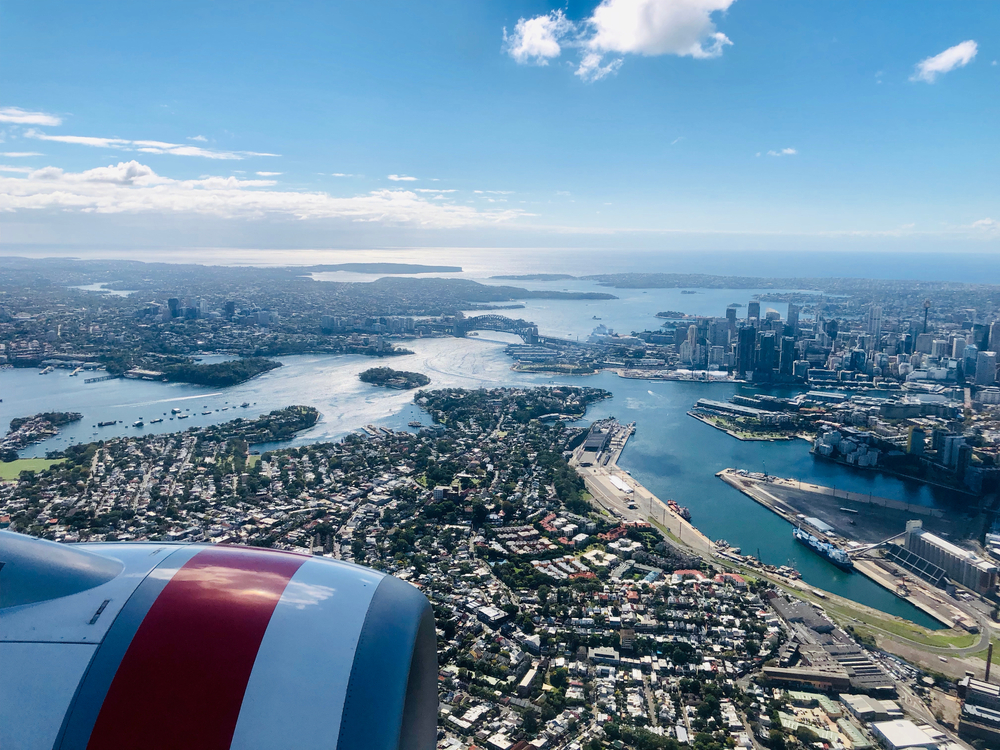If someone in Sydney travelled directly north, they’d go 3,000 kilometres before they reached another country. Going east or west is over three times the distance, and south would take them to an icy wilderness awash with penguins.
Sydney is incredibly remote. But despite this, it’s home to 5.23 million people, with an additional 16 million people visiting the city every year.1 pushing its only airport to its limits.
With so many people coming and going (soon to restart), Sydney’s existing airport has reached capacity, prompting the confirmation of a second airport after decades of debate—Western Sydney Airport. In this article, we’ll explore the essentials for Sydney’s new airport, so that you can get a better idea of its location, open date, flight paths, and more.
Western Sydney Airport
Western Sydney Airport will be located in Badgerys Creek, a Sydney suburb roughly 41 kilometres west of the CBD, 13 kilometres south of Penrith, and 20 kilometres north of Campbelltown.
The airport’s site was chosen 34 years ago by the Federal Government but was followed by much dawdling, until eventually being reconfirmed in 2014.
The Badgerys Creek site was chosen for the following reasons:
- The nearest suburban residences are over 10 kilometres away. By comparison, Kingsford Smith Airport is just 0.6 kilometres away from suburban residences, which is the reason for its 11pm to 6am flight curfew.3 Western Sydney Airport will be curfew free, allowing it to ferry millions more passengers every year
- The site is close to road and rail transport links, which are cost-effective to extend, making the airport accessible
Open Date
Construction for Western Sydney Airport began in 2018, and is expected to be completed by 2026, with the airport fully operational.2
Airport Size
The Badgerys Creek airport site is roughly 1,780 hectares—twice the size of Sydney’s Kingsford Smith Airport.
In the short term, the airport is designed to cater to around 10 million passengers per year, with a single runway that can accommodate the largest commercial aircraft. By 2063, with the construction of a second runway, the airport is expected to accommodate 82 million passengers per year.4
Both domestic and international flights will operate out of Western Sydney Airport.
Flight paths
Initial flight paths were confirmed by the government in 2015, but after extensive community backlash, have since been marked as “indicative.” These initial flight paths included flying over Blaxland, Warragamba, Wallacia, Greendale, Silverdale, Luddenham, Glenbrook, Lapstone, Emu Plains, Penrith, St Marys, and Twin Creeks.
Towns affected by Western Sydney Airport’s “indicative” flight paths
Transport
For the airport to be successful, a number of effective transport links are needed. This includes extensive road and rail upgrades, allowing people to quickly access the airport.
Road
$3.6 billion is being spent as part of the Western Sydney Infrastructure Plan, which includes upgrades to the following roads and intersections:
- Ross Street Intersection—Glenbrook
- Werrington Arterial Road
- The Northern Road and Erskine Park Road
- M12
- Smithfield Road
- Bungarribee Road and Flushcombe Road
- Wetherill Street
- Cumberland Highway
- Bringelly Road
- Raby Road
- Eagle Vale Drive
- Porrende Street
- Argyle Street / Camden Valley Way
Travel time from the Sydney CBD to the new airport is currently an hour, but it’s unclear how much quicker this will be after the road upgrades.
Proposed road and intersection upgrades. Image from Western Sydney Airport
Rail
The airport is likely to be serviced by three rail lines:5
- East-West Link from an extension of Sydney Metro West. This will be available by the airport’s opening date in 2026.
- North-South Link from Schofields to Macarthur
- New North-South Link from St Marys to Badgerys Creek Aerotropolis
Unfortunately, there’s no current plans for a high-speed rail service, so journey time from Sydney’s CBD will be roughly an hour.6
Bus
Express bus routes will run to the airport’s precinct from Penrith, Liverpool, and Campbelltown. Other bus routes are yet to be announced by the project’s planners.
Why is it being built?
Sydney’s flight demand is forecasted to double by 2034, to around 76 million passengers. By 2060, that figure is expected to be a whopping 145 million passengers. The city of Sydney simply can’t accommodate that many people with a single airport, which would cost them billions of dollars in lost revenue. Sydney needs a second airport.
How much will it cost?
Initial costs for the airport were estimated at $2.4 billion.
Jobs and growth
The airport is expected to generate the following jobs and revenue:4
- 11,000 jobs in construction, engineering, and professional services
- Construction period—$1.9 billion for Western Sydney’s economy, and $400 for the rest of the city
- 15,000 jobs by the early 2030s, and 87,000 by the early 2060s. This includes the following occupations:
- Office services and admins
- Technicians and trade
- Community and personal service
- Professionals (engineers, air traffic controllers, etc.)
- Machinery operators
- Sales and retails
- Managerial
- Labourers
References
- 2020, Sydney Tourism Statistics – How many visit each year? (2020), Camper Champ
- Western Sydney Airport, Australian Government
- Sydney Airport Curfew, No Aircraft Noise
- An airport for Western Sydney, Western Sydney Airport
- Western Sydney Airport, Wikipedia
- Matt O’Sullivan, Sydney's Future Airport at Badgerys Creek | Sydney 2026, Sydney Morning Herald


 1300 615 165
1300 615 165







 Secure Payments
Secure Payments
